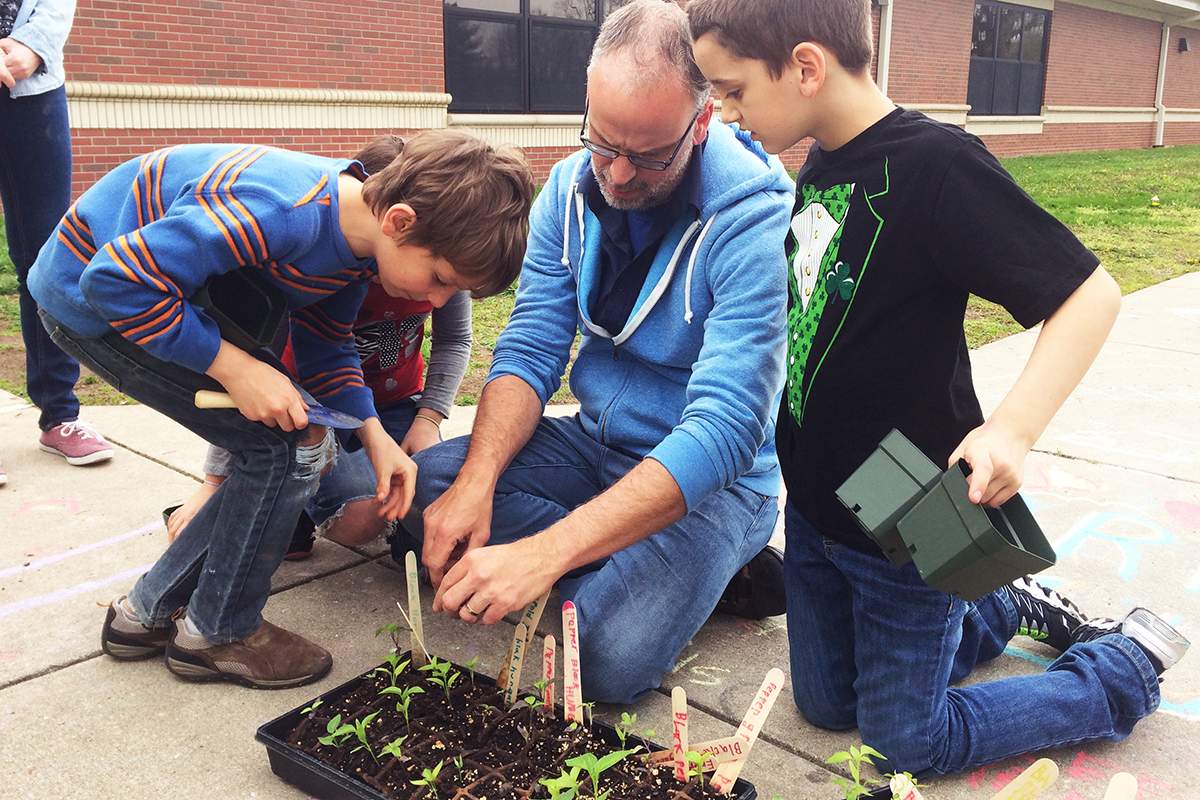
This week on Earth Eats, we meet kids in an after-school garden club at Benjamin Franklin Elementary in Terre Haute, Indiana.
This story orignally aired in 2018.
Mark Minster of Rose Hulman Institute of Technology led the program. It was part of the Ryves Up! initiative in the Ryves neighborhood where Benjamin Franklin is located.
We talked with him about inquiry-based learning and found out what a sprouting potato might have in common with a Minecraft mob.
---
Erika Yochum is a chef, and when this story was recorded in 2017, she was the chef and owner of Feast Restaurant and Catering, and Feast Market and Cellar. She's now involved in with Planted food truck.
Garden-fresh and local food are some of the themes of her work as a chef. A 2017 visit to Bloomington by Alice Waters, renowned chef and founder of the Edible Schoolyard Project, lit a fire in Yochum, to get involved in school gardening in her community. Lucky for her, the elementary school right across the street from her restaurant had an active school garden.
That summer she began helping out in the garden, keeping the weeds under control and preparing beds for the students to plant. Once school was in session, she visited a large, multi-age classroom weekly for Cooking With Erika. She took a group of kids out to the garden to harvest what's available, and they'd bring it back to the classroom for a simple preparation that they could share with the whole class (71 students).
One week they made salsa with the tomatoes, peppers and herbs they harvested, plus the onions and garlic that had been curing in the shed since July (also grown in the garden). The next time, they made pesto with the basil and garlic, and served it on toast.
At the time, the classroom had three teachers, Rise Reinier, Kevin Gallagher and Megan Somers-Glenn. The class occupied three connected rooms and included students ranging from kindergarten to sixth grade. Each week they had hour long sessions called Invitations. The children signed up ahead of time for the activity they'd like to try (they didn't always get your first choice). The activities included topics such a Paint a Poem, Native Plants, Take it Apart, Origami, Rube Goldberg Contraptions, Knitting, Duct Tape Creations, Write a Song, Great Artists, Design a House and Gardening. Some sessions were led by and invited guest or teacher, some were student led.
Cooking with Erika allowed for another level of engagement with the garden, and buildt understanding about where food comes from and how it makes its way from the field to the table.
We also shared stories from Harvest Public Media on the development of a perennial grain, the value of an oxbow, farmworker housing and raw milk.
Plus a pie recipe that's easier than pie.
Music on this episode:
Suzanne's Jam - Jacko Peake/Rhythm Section
The Earth Eats' theme music is composed by Erin Tobey and performed by Erin and Matt Tobey.
Credits:
The Earth Eats’ team includes: Eoban Binder, Alexis Carvajal, Alex Chambers, Toby Foster, Daniella Richardson, Samantha Shemenaur, Payton Whaley and Harvest Public Media.
Earth Eats is produced, engineered and edited by Kayte Young. Our executive producer is Eric Bolstridge.
Stories On This Episode
Chef Erika's Watermelon Shakes
Start with fresh watermelon, and add the fruits and herbs of your choice, for a refreshing beverage, straight from the garden.
Kayte's Summer Berry Galette

Summertime is the time for fruit pies. Kayte shares a simple method for getting summer fruit baked into a pie shell.













